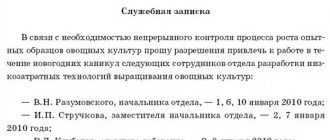# Varieties and goal setting
At each stage of candidate selection, the employer tries to find out whether your plans for the future coincide with the company’s intentions. Therefore, the goal is mentioned in the resume, cover letter, and the question is asked again during the interview.
To formulate the right goal, you need to build a relationship between career, life and personality.
# Personal goals
This is the result of doing work that only benefits you: monetary reward, career growth, acquisition of new skills, etc. People always want to benefit from professional activities, but are rarely ready to admit it - a person is embarrassed to openly declare that in his work he is only interested in the salary.
But without mutually beneficial cooperation, reliable business relationships are an illusion. If you want to get the perfect job, learn to listen to yourself and openly declare your intentions.
To formulate it correctly, honestly answer three questions:
- What personal problem will I solve if I take this position? (besides salary)
- What result do I want in the end?
- What actions do you need to take to achieve your goal?
Example: (1) I will gain management experience, improve my qualifications, and meet the right people. (2) I will be able to apply for a better salary and position, and receive a certificate. (3) Complete an internship, conclude 100 contracts, get a promotion from your superiors, ask for a recommendation.
If you delve into yourself and find the relationship between the individual and the field of activity, then work will bring pleasure and arouse the genuine interest of business partners.
Tell your employer about your personal goals if they are directly related to future work and can pique the boss’s interest.
# Professional goals
If the goal reveals the content of the work and says what kind of help you can turn to, what results you will show in the course of performing your duties, it is professional.
True goals reflect professional interests and are always focused on other people. They indicate work that you are able to do for a long time and with high quality. Such motives have individual and social significance, leading to professional development and public recognition.
Expert opinion
Nikolay Borozdin
Director of a recruitment agency
Ask a Question
The unique property of a correctly expressed work goal is to instantly attract the people you need for each other. With it, you automatically go halfway to success.
Clear professional intent defines four questions:
- What people's problems am I best at solving?
- What resources do I use to solve problems?
- What benefits do people get after working with me?
- Who are these people who need my help?
Example: (1) Legal and financial support of transactions. (2) Concluding fair and competent contracts, knowledge and control of the contractor’s obligations. (3) Successful and profitable purchases, saved time and money. (4) Investors, real estate buyers, clients of real estate agencies.
# Life goals
They have a conditional but key connection with work activity and are meant to be achieved over a long period of time (5, 10, 20 years). As a rule, they are associated with the development of family relationships, travel, health or hobbies.
The purpose of life has a very deep meaning, it can grow and be completed. As if climbing a ladder, you must conquer new heights and improve, and work is a means of achieving it and self-realization.
Two main questions that will determine the meaning of your actions:
- What do I want to try and experience in my life?
- What will remain after me, what legacy?
Example: (1) Visit the North Pole, jump with a parachute, get a tattoo... (the list should be long). (2) An apartment and start-up capital for children, an established business, a published book.
Results can only be achieved through mutually beneficial cooperation: with the help of those who need your knowledge and those you need. Know how to thank and care for people who help you achieve your goals.
# How to correctly write an objective in a resume
Expert opinion
Nikolay Borozdin
Director of a recruitment agency
Ask a Question
Every employer values his time and tries to quickly find a good specialist, so you need to indicate your intentions clearly so that he does not invent a job for you.
It is believed that you can fill out the column with one word - name the position that is preferable to others. But you can’t avoid a detailed answer if you expect serious work.
# Step #1: Purpose of job search
The first thing that interests the boss and the main component of this section is the indication of the position for which you are applying. It should be specific, without unnecessary adjectives (creative, interesting, promising) and immediately give an idea of the vacancy.
Deputy Director of Production…
# Step No. 2: The purpose of compiling and submitting a resume
The second component determines the company and field of activity - the employer must recognize his company in the description. Proper self-presentation assumes that you are familiar with the industry, have experience and the necessary skills for the job.
Deputy director of production in an oil and gas company (gas production)…
# Step #3: Career Goal
The third component talks about aspirations, wishes, skills or experience. Information can be reflected in the cover letter, it is not required in the column. This approach creates the image of a true professional, a purposeful person who knows his business.
Deputy director of production in an oil and gas company (gas production). Increasing the efficiency of gas production at the stage of field development, gaining experience in management and personnel organization.
Common goals
But there are situations when an applicant applies for several vacancies at the same time. In this case, it is better not to look for a sample resume objectives without a specific position, but to create a resume for each of the vacancies that interest you separately. General goals can be formulated as follows:
- work in a large trading company;
- realize your increased efficiency, organizational skills and enthusiasm in a distribution company;
- get an interesting job in a large manufacturing company;
- applying for a position in a stable company, getting the opportunity to demonstrate your skills.
But it is better to avoid such formulations. The recruiter should not decide for you what kind of job you want to get.
Good to know: How to write a cover letter for a resume
# What purpose should you include in your resume?
The line should demonstrate your competence, ambition and desire to work, and the ability to clearly present information allows you to quickly receive lucrative job offers. An expert can always be recognized by the quality of the formulation of his goals.
Expert opinion
Ekaterina Troitskaya
HR manager
Ask a Question
To achieve results, cross out all vague phrases from your resume (to be useful, a promising job, the best specialist, decent earnings, etc.) and do not send the same application for every vacancy you see. Each position has a unique goal!
# If there is no specific position
When the main concern is the salary, the question arises: how much and for what kind of work should you be paid? To determine the amount of money, understand your life goals, and the area of work - personal and professional.
Step-by-step employment plan:
- Use job search sites to find companies in your city with openings.
- Filter offers by convenient parameters: schedule, payment, industry.
- Save a selection of your favorite posts to bookmarks or a text document.
- For each vacant position, compose a targeted resume and send it to the company’s email and through the portal.
- Show interest - call the company and inquire about an interview.
# Examples of competent work goals
The full statement contains information about the results of future work, based on past experience and skills (with deadlines, numbers and ways to achieve the goal).
Each applicant has different deadlines and methods; only an abbreviated version is indicated in the resume. But at an interview or personal meeting with your boss, specific plans will make an impression and create a desire to work together.
Below are abbreviated examples, just for writing in a column:
Do you take the time to carefully study the graph?
Not really
- Design engineer in production (in the technical field) with the functions of a representative. Development and promotion of new types of goods.
- Legal assistant. Acting as a client's attorney in drawing up contracts and supporting real estate purchase and sale transactions.
- Chief Sales Manager. Expansion of the network of dealer centers, development and provision of a sales plan for dealers.
- Sales consultant of household appliances and electronics. High-quality consultations taking into account the client’s wishes and purchase support.
- Chief manager of the company (welding equipment sector). Organization of European-level production with the introduction of new technologies.
- Economist, financier, accountant in an audit company (taxation).
Description of the position(s)
In this article we will talk about how we write a job description in practice (including to prepare the description for job evaluation and grading), rather than the theoretical foundations of a job description.
Description of the position(s) is a very useful process. When describing, the manager systematizes his understanding of the function of the position and systematizes his understanding of the areas of responsibility of his department. This sometimes has the effect of catalyzing organizational change.
So, let's create a job description.
General information. In this section we describe the department, position and subordination.
Additional information about the nature of the position. In this section, we briefly describe the environment of the position (we describe the functions of the department in which the position works). We describe the place of the position in the processes of the unit and the subordination of the position. This information is for general guidance.
Purpose of the position. The purpose of the position is a summary of why it is needed. This summary reflects the expected contribution of the position to achieving the company's goals. The purpose of the position is most often one.
In order to determine the purpose of a position, you can ask a simple question: “What would not be in the company if this position did not exist?”
As a rule, the goal of the position is “stronger” for the manager than for the subordinate. TOP management provides, management directs, all other verbs are performers.
We formulate the purpose of the position, as a rule, after describing the areas of responsibility. It is important to remember that this is not a listing of all activities, but rather a general summary of why the position exists in the organization.
Organigram. This is a graphical representation of the position's place in the organization's structure. As a rule, when constructing an organigram, we display not only direct subordination, but parallel structures. This allows you to obtain more complete information about the position of the position in the structure of the organization (at what level the position is located), about what processes the position is responsible for (the title of the position alone does not determine its position). This helps in balancing the company’s job matrix and allows you to understand the level of the position in the overall job structure of the company.
Areas of responsibility. Depending on the level, there are different numbers of areas of responsibility. A good job description has 4-5 (up to 7-8) areas of responsibility. When describing, we must not forget that positions at different levels may have the same areas of responsibility, but the roles of the positions may be different. Let's take a closer look at this important topic.
The area of responsibility is the result of activities. This is a measurable impact on the final result of the activity. If we further develop this concept, then the official carries out activities within certain limits. The framework can be: policies, laws, instructions, standards, management orders. It is important to articulate the outcome or purpose of the area of responsibility. It's rare that this fails. To determine the type of activity you need - WHAT? that is, what the position does. For the “framework” section we ask the question – IN WHAT FRAMEWORK? To formulate the format of the result - WHY?
The main characteristics of the areas of responsibility are the following:
- Identify all key performance results;
- Focus on results: “what”, not “how”.
It must be remembered that areas of responsibility are constant over time and are subject to measurement. When describing, it is advisable to reflect the specifics for this position. We try to preserve the organization's terminology. It is important to check that the main activities are not duplicated and are unchanged in the short term.
We use two approaches to job descriptions:
- According to the process of activity. As a rule, this approach helps to describe simple positions. We go through the process (of what the position does). The main steps tend to be in areas of responsibility;
- According to functional responsibilities. As a rule, this approach is good to use when the manager has subordinate units and this fact determines the main areas of responsibility. These tend to be the main areas of responsibility.
When describing, please note the following:
- Avoid too much detail. This will hinder your ability to analyze the functions of the position in the future. Collect sufficient information about the activities of the position;
- Check: the position actually performs the functions directly described;
- Distinguish between the roles of managers and subordinates in activities;
- Leading a group of people should be identified as a separate area of responsibility;
- Separate “consulting” and decision-making.
The main thing in job descriptions
And now the key information. The structure of the area of responsibility is as follows:
- Action verb (what does: calculates);
- Object (what or to whom: cost of production);
- For the purpose (in order to);
- Expected result (for what: determine the selling price of the product).
And this is what we got:
Calculates the cost of production in order to determine the selling price of products.
In the following article:
- we will dive even deeper into describing areas of responsibility;
- we will analyze the formulation of the purpose of the position;
- we will analyze the formulation of quantitative indicators of the position;
- Let’s formulate the basic rules for formulating education and work experience;
- We will describe the quality control of the job description;
- We will show how the job description and job evaluation are interconnected.








